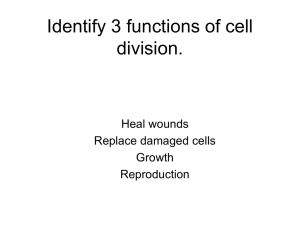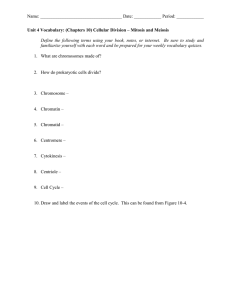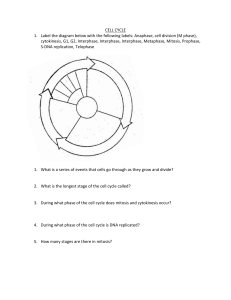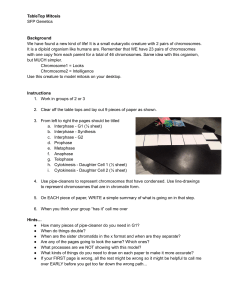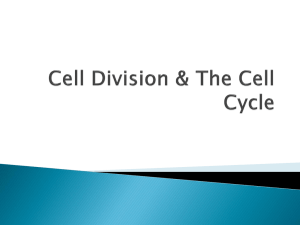Uploaded by
Jennifer Peterson
Cell Growth & Reproduction: Cell Division, Chromosomes, Mitosis
advertisement
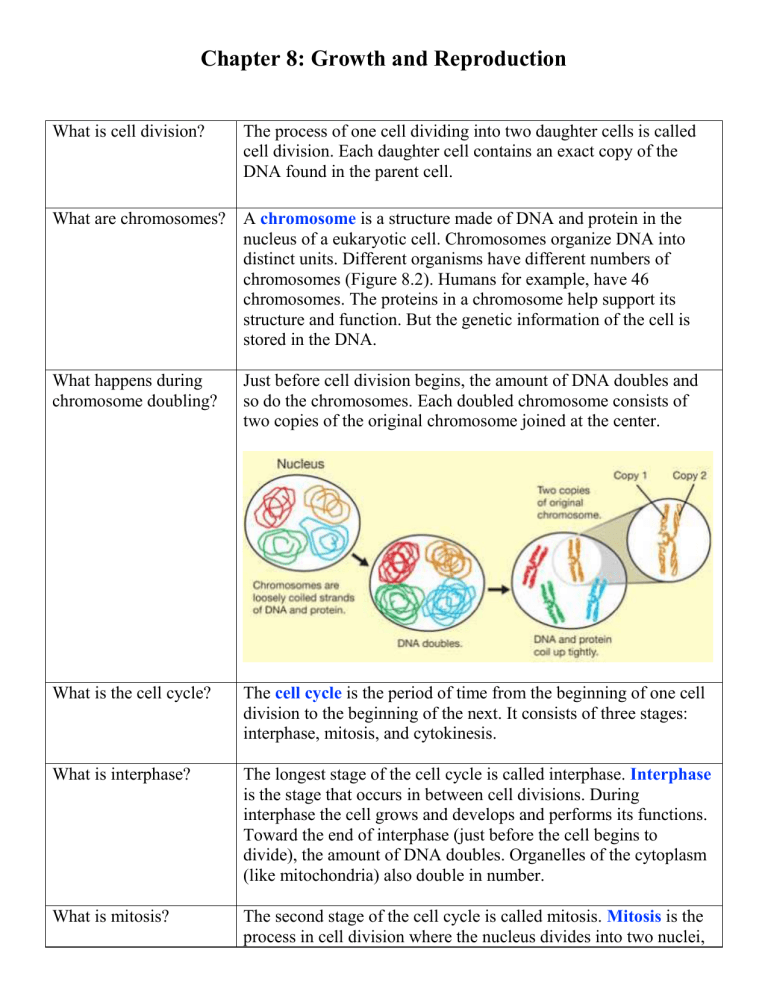
Chapter 8: Growth and Reproduction What is cell division? The process of one cell dividing into two daughter cells is called cell division. Each daughter cell contains an exact copy of the DNA found in the parent cell. What are chromosomes? A chromosome is a structure made of DNA and protein in the nucleus of a eukaryotic cell. Chromosomes organize DNA into distinct units. Different organisms have different numbers of chromosomes (Figure 8.2). Humans for example, have 46 chromosomes. The proteins in a chromosome help support its structure and function. But the genetic information of the cell is stored in the DNA. What happens during chromosome doubling? Just before cell division begins, the amount of DNA doubles and so do the chromosomes. Each doubled chromosome consists of two copies of the original chromosome joined at the center. What is the cell cycle? The cell cycle is the period of time from the beginning of one cell division to the beginning of the next. It consists of three stages: interphase, mitosis, and cytokinesis. What is interphase? The longest stage of the cell cycle is called interphase. Interphase is the stage that occurs in between cell divisions. During interphase the cell grows and develops and performs its functions. Toward the end of interphase (just before the cell begins to divide), the amount of DNA doubles. Organelles of the cytoplasm (like mitochondria) also double in number. What is mitosis? The second stage of the cell cycle is called mitosis. Mitosis is the process in cell division where the nucleus divides into two nuclei, each with an identical set of chromosomes. Mitosis is divided into four phases: prophase, metaphase, anaphase, and telophase. What is cytokinesis? The shortest stage of the cell cycle is called cytokinesis. In cytokinesis, the cytoplasm and its organelles divide into two daughter cells. Each daughter cell contains a nucleus with an identical set of chromosomes.
